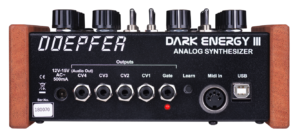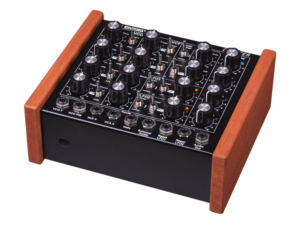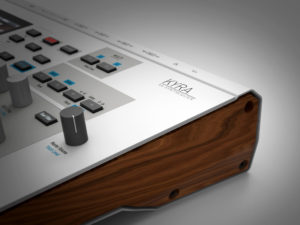














I have had the Strymon Magneto for some time now and I decided to shoot a short video discussing some of my thoughts.
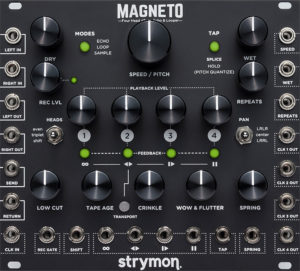
spoiler it is a very musical module. I really enjoy the hands on control. While admittedly I was concerned about the price point. Considering I recently had purchases a Rainmaker delay module which did not last in my rack. The Magneto was met with a bit of caution. I must say however I am left quite impressed. it is deceptively deep and quite controlled and full of “sweet spots”. The ability to reverse delays and freeze moments in time is great. Check out the video and let me know what you think.
for more info check out https://www.strymon.net/products/magneto/
Pearl Announces North American Distribution Deal with Keith McMillen Instruments Further Expanding KMI’s Reach
Nashville, TN and Berkley, CA – June 15, 2018 – Pearl Corporation, a leading provider and manufacturer of acoustic and electronic drum and percussion products, together with Keith McMillen Instruments announce a distribution partnership to grow the availability and awareness of KMI products while expanding KMI’s reach into new markets.
This new distribution connection between Pearl and Keith McMillen Instruments will enhance the availability of KMI products and grow Pearl’s ever increasing footprint in the MI landscape. Pearl will also utilize its expertise in the School and Educational markets to introduce the many benefits of KMI instruments to music students and educators at all levels.
Pearl’s relationship with the Keith McMillen team began in 2015 as the two companies collaborated to develop Pearl’s MalletSTATION powered by KMI’s Smart Fabric Technology. MalletSTATION is a slim, modern, USB powered mallet controller that has been named the Best New Performance Tool for 2018 by School Band & Orchestra magazine and has received a 2018 Editor’s Choice Award from Music Inc.
Developing MalletSTATION gave Pearl a great understanding of just how disruptive KMI’s groundbreaking Smart Fabric Technology can truly be in the musical instrument space, stated Terry West, Pearl Corporation President and C.E.O. After reviewing KMI’s current product line it became evident to us all that Pearl’s reach and marketing abilities could bring added awareness and availability to the KMI brand. We are honored to represent KMI’s innovative products and extremely excited to see where this collaboration and distribution partnership might lead us in the future.
“While working with Pearl on the design of the MalletSTATION we came to appreciate their commitment to the highest quality and playability of musical instruments. Pearl understands what it takes to make an electronic controller behave in a most musical manner. We share that commitment. KMI has always focused on producing these new instruments while Pearl has also created a world class sales and marketing team. It makes perfect sense to have our instruments distributed by people who understand what makes a professional tool and how to support these instruments in the field” said KMI Founder and C.E.O. Keith McMillen.
The KMI product portfolio includes such innovative products as the Bop Pad, K-Mix, QuNeo, and QuNexus. Pearl will begin accepting orders for KMI products effective June 18, 2018.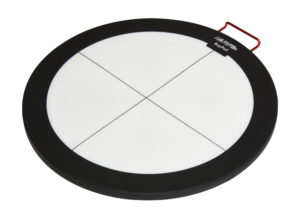
For more information about Pearl please visit www.pearldrum.com and www.keithmcmillen.com for more information about KMI.
Pearl Corporation is a division of Pearl Musical Instruments, a world-wide leading manufacturer of acoustic and electronic drums, concert and marching percussion instruments, hand percussion and flutes. Pearl Corporation is also the exclusive U.S. distributor of Adams Musical Instruments and Keith McMillen Instruments. Pearl Corporation is based in Nashville, TN.




Dove audio is proud to announce a completely new concept in waveform morphing for it’s new oscillator module for both Euro and MU(MOTM and dotcom) modular systems.
The Window Transform Function (WTF) is a radically different way to morph between two waveforms, create a hybrid mix of two waveforms previously unheard of.

Pre-production prototype module in euro-rack format.

The concept is a relatively simple one, two waveforms are used (front and rear) and are synchronous. A ‘window’ can be opened in the front waveform allowing a portion of the rear waveform to be ‘inserted’ into the front waveform. It is also possible to have dual windowed waveforms (as shown in the picture above).
Below is a drawing showing the resultant output when windowing a sawtooth with a square wave.
Example WTF output wave in Yellow, with a red square wave for the front waveform and a blue sawtooth for the rear
Front wave, Rear wave and Window width have full independent control via CV.
A video showing the window transform function in use is given below;
The oscillator also has a tuneable noise feature, demonstrated in this video;
Two short audio demos can be found here –
https://soundcloud.com/doveaudio/sets/wtf-module-demonstrations
The WTF oscillator will first be available in both Euro-rack and MU(dotcom and MOTM power) modules via our Kickstarter campaign, here –
https://www.kickstarter.com/projects/paulamaddox/2048792742? ref=2bhvu3&token=da810166#
About Dove Audio (www.Dove-Audio.com)
After a 12+ month break the world of synthesizer design Paula Maddox is back with a new company and fresh new ideas in the form of Dove Audio. She has a proven track record spanning nearly 20 years for delivering high quality and unique designs to the industry.
Dove Audio aims to produce unique and innovative audio products for the electronic music enthusiast and professional alike.
I plan on having Paula on a show in the Near future to discuss Dove audio and the WTF oscillator.

